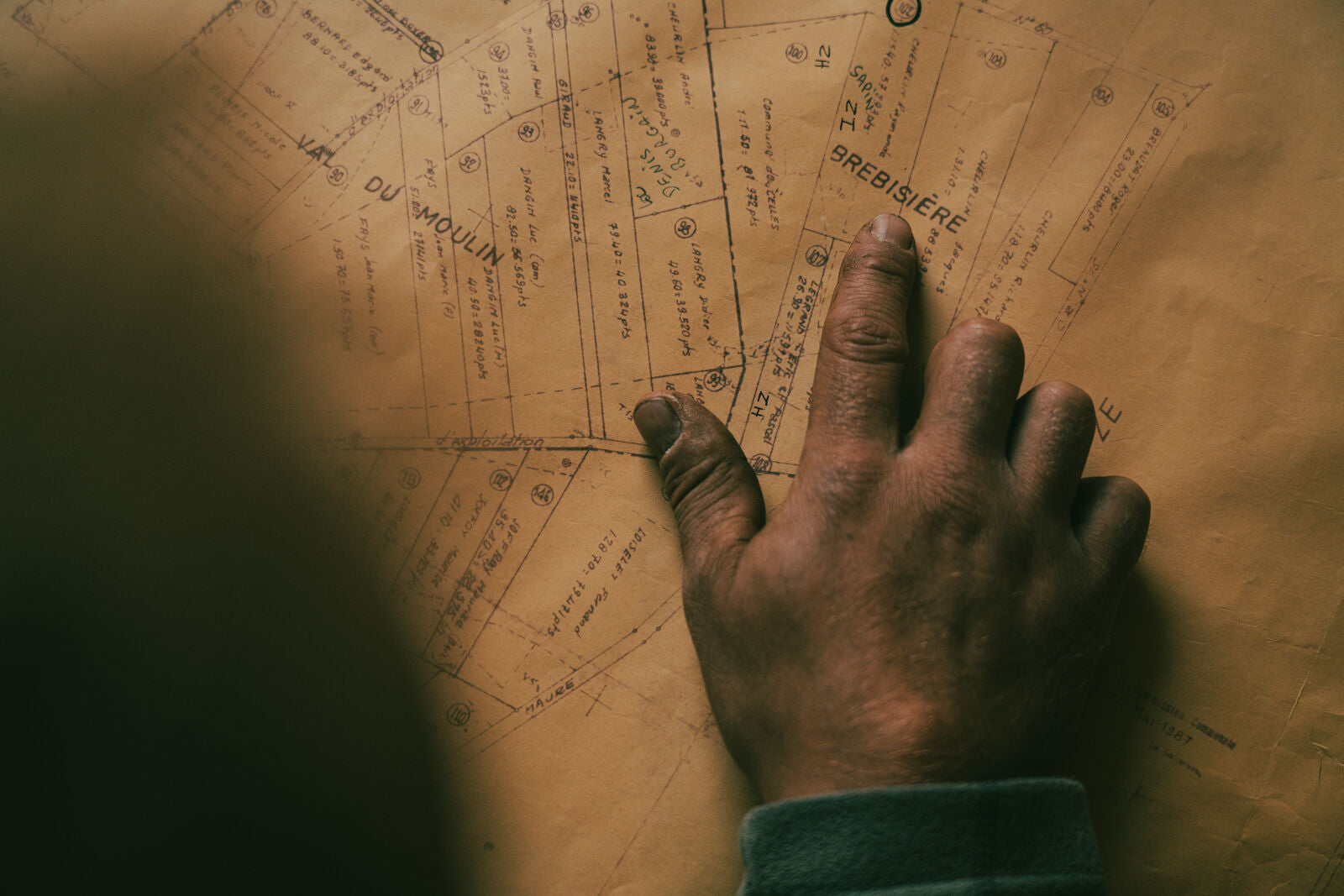The Estate
-
1153
The hillsides of Celles-sur-Ource grew their
first vines in 1153 following the establishment of the Abbey
from Morres (on the current border of Celles) -
13th and 14th centuries
The "Morres" Abbey prospered during the central Middle Ages, the hillsides planted with vines around the abbey provide quantities of wines, renowned locally for their finesse.
-
1790
The abbey was abandoned following the French Revolution and its properties were sold as national property, the buyers are winegrowers from Celles-sur-Ource, including our ancestors
-
1794
At the end of the 18th century, our forebear Joseph Cheurlin owned 3.30 hectares of vines and a wine press
-
1932
Raymond Cheurlin produces and sells sparkling champagne wines
-
1982
Eric Legrand, after completing his training with his grandfather Raymond, founded his estate
The "Côte des Bar"
The Côte des Bar is the oldest region
geological (Jurassic) of the “Champagne viticole” with, among other things, soils
Kimmeridgian made up of clay-limestone marls, one of the terroirs of
first rate for fine wines.

A winegrower village
Celles-sur-Ource, historically situated on the borders of the provinces of Champagne and Burgundy, was for a long time a battleground between these two medieval powers.
For many years, Celles-sur-Ource and its inhabitants belonged to the monks who developed the cultivation of vines and wine, and learned this art at their side.
Following the desertion of the abbeys during the French Revolution, the commune's inhabitants became owners of their commune's vineyards and were able to develop their own winegrowing operations.309 hectares of Champagne appellation vineyards are planted on the Celles finage today, 20 hectares of which are devoted to the cultivation of a rare Champagne grape variety, pinot blanc.

Terroir
The "Barrois" plateaus, made up of Jurassic limestone, form the south-eastern limit of Champagne.
Forming a cuesta slightly inclined from southeast to northwest, digging deep valleys.
The climate presents continental variations: spring frosts, cool summers and storms with hail.
Despite the harshness of Mother Nature, the clay soils of the Kimmeridgian slopes ensure quality viticulture.
The limestone mineral bed, covered with marl (rock mixing clay and limestone), traces a line of springs and creates a terroir suitable for viticulture, despite the challenges linked to cultivation in this northern region.
The Estate
The estate's vineyard now extends over 13 hectares located mainly within two crus, Celles sur Ource and Landreville, two adjacent villages located in the Ource valley.
Our vineyard is planted on magnificent limestone hillsides.
This limestone rock was formed during the Kimmeridgian era and is characterized by a high concentration of fossilized bivalves (mainly oysters).
Our wines express the subsoil where the roots draw their nutrients, thus giving rise to mineral, fine and fruity wines.
Our champagnes are made exclusively from grapes from our vines, our practice of sustainable viticulture is attested by our HVE3 certification.
-

Visits
-

Tastings
A Family Passion
Our family is dedicated to crafting fine Champagne wines that faithfully reflect the terroir where our vines flourish. This project is based on a passion passed down from generation to generation, as well as an empirical approach.

Eric Legrand
Eric LEGRAND is the current custodian of this ancestral vineyard, whose plots were cultivated with devotion by his ancestors, on the historic terroir of Celles-sur-Ource.
His role was to preserve and develop this heritage, without compromising his convictions of respect for the environment, and rigor both in the vines and in the cellar.
A lifetime's work, which was rewarded with the title of Chevalier du mérite agricole in 2024, awarded by the French Ministry of Agriculture.


